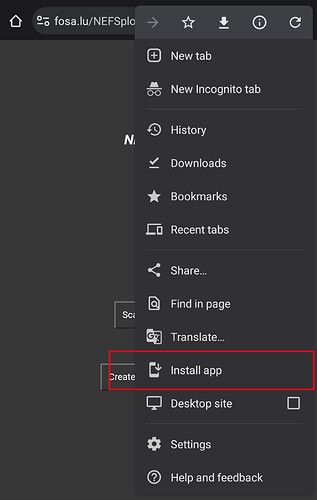Dear community,
I’m excited to share my latest project with all of you today. NEFS (NFC Exchange Filesystem) is a rudimentary filesystem for NFC devices. The filesystem is based on the NDEF (NFC Data Exchange Format) standard and uses the NDEF message format as a foundation for it’s entry based filesystem structure. This allows the NEFS filesystem to be compatible with every NFC device that supports the NDEF standard. Meaning, that you can now store your files on any NDEF compatible NFC device. The only limitation is the storage size of your NFC tag. But if you’ve got an Apex with the 32kb NFC Share applet installed, you can store all kinds of files on it! If you wanna know more about the technicalities, you can find the documentation for NEFS here: NEFS_Documentation.pdf
NEFSplorer - https://fosa.lu/NEFSplorer
Of course, a filesystem is useless if you don’t have a piece of software to read and write from, and to it. This is where NEFSplorer comes in. NEFSplorer is similar to your usual file explorer suspects, but to make access as easy as possible, it runs inside of your browser. Currently, NEFSplorer is supported on all Android devices with an NFC antenna and an up-to-date version of Google Chrome. Hardware and software support could be extended in the future if Web NFC support becomes more widespread. NEFSplorer is not only a website, it is a PWA (Progressive Web App). Meaning, that it can be installed as an app from inside of Google Chrome as shown below:
Different file types are natively supported, making it easy to view these files directly within NEFSplorer. If a file type is not natively supported, it will be automatically downloaded to your phone when you try to view it. Here is a list of the natively supported file types:
- JPG (JPEG)
- PNG
- GIF
- MP3
- WAV
- OGG
- TXT
Below, you’ll find a short video showing the basic functions of NEFSplorer:
By now you may be wondering “But, if NEFSplorer runs inside of a browser, how can I be sure that it doesn’t steal and upload my files and data to some remote server somewhere?”. Well, I’m telling you that NEFSplorer does NOT upload ANY user data to anywhere other than your NFC device. But we all know, you should NEVER trust a stranger on the internet, that’s one of the reasons why I chose to release NEFS and NEFSplorer under the X11 MIT license, making it fully open source and giving the community “the rights to use, copy, modify, merge, publish, distribute, sublicense, and/or sell copies of the Software” as stated inside the source code of NEFSplorer and the NEFS documentation. The source code is available here: NEFSplorer_source.zip
If you got any ideas for improvements or new features, drop them right below this post and maybe I’ll add them. Same for questions, if you got any, drop them below.
I hope you’ll enjoy storing files on your implants and other NFC devices!
Cheers,
Sam
